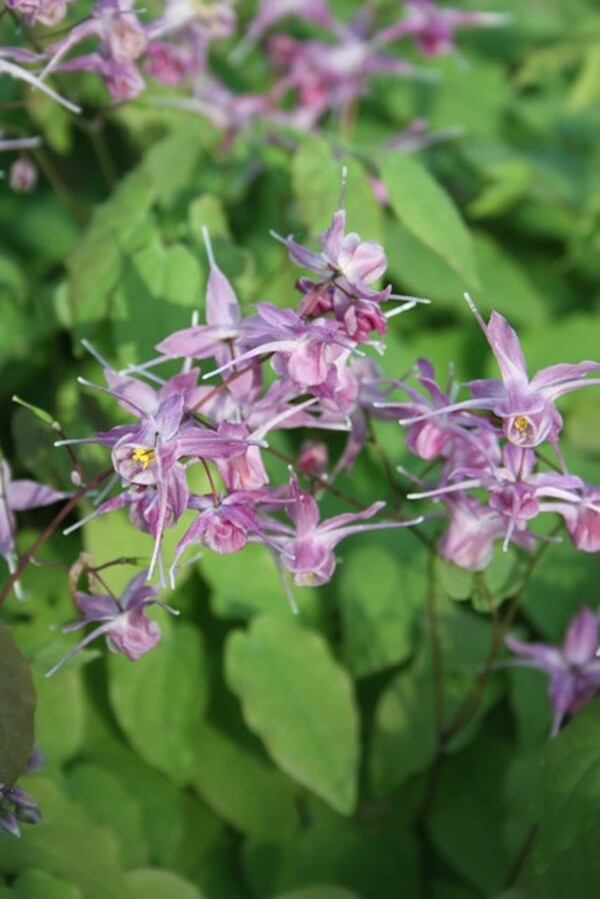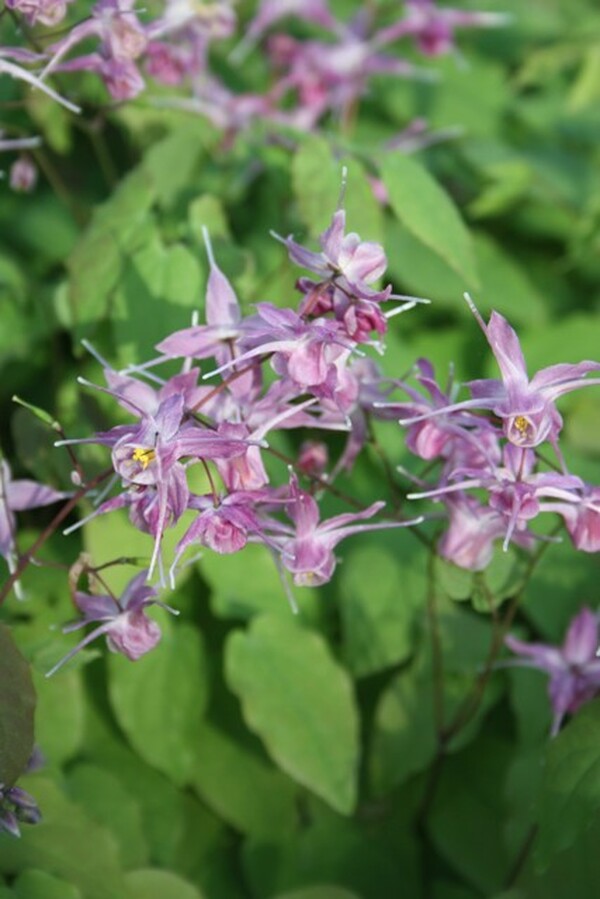Epimedium grandiflorum 'Lilafee'
Lilafee Fairy Wings
This plant is not currently for sale. This is an archive page preserved for informational use.
Shop Available EpimediumItem #: 3518
Zones: 4a to 8b
Dormancy: Winter
Height: 10" tall
Culture: Part Sun to Light Shade
Origin: Japan
Pot Size: 3.5" pot (24 fl. oz/0.7 L)
This dwarf selection of the deciduous Japanese native, Epimedium grandiflorum, comes to us via famed German plantsman, Ernst Pagels. In mid-spring, the new ear-shaped foliage of Epimedium 'Lilafee' emerges with a dramatic bronzy-lavender color. Alongside the foliage, the 10" tall flower spikes emerge, each clothed with spidery violet flowers...extremely cute! I recommend planting this fairy wing near a rock or other garden element for the best visual effect.
Maintenance:
Epimediums require very little maintenance. To keep them looking their best the old foliage needs to be removed. This is a tidiness issue and not a health of the plant issue. Their floral display is much more appealing if old foliage removal is completed before they bloom. Epimediums are either deciduous or evergreen. The foliage of deciduous types can be removed as soon as it becomes unsightly, which is usually after a frost in the fall kills the foliage. The foliage of evergreen ones can remain attractive all winter. Indeed this foliage is sometimes still attractive come spring. Yet it is still strongly advised that this now year-old foliage be removed before new growth is produced. The new growth, including flower stalks, is very fragile and this is why it is best to remove the previous year's foliage before new growth starts so as to prevent damage to the new growth. One might be tempted to leave last years foliage if it is still attractive at this time but be advised that it will die away come spring and by then if is a very tedious job to remove each leaf, leaf by leaf.
The removal of spent flower stalks can improve the appearance of the foliage display and prevent unwanted seedlings.
Epimedium do not need regular division. Indeed they might never really need division, but can be divided if one wants to have more. Clumping ones can be dug and divided into smaller clumps. Spreading types can be dug and individual rhizomes replanted to expand the display.
Growing Conditions:
Epimedium are shade plants and want average soil. They are more tolerant of dry shade than many other plants.
Natural Impact:
Most Epimedium are spring bloomers and as such add much to the spring display in shade gardens. A few continue to bloom for an extended time. The foliage is most often an ornamental feature with its graceful form held aloft to wiry stalks. Some leaves have saw-toothed edges to the leaves. Spreading types make good small scale groundcovers.

-
Other Attributes
Genus: Epimedium
Flower Color: Pink , Purple/Lavender
Leaf Color: Purple/Lavender
Bloom Time: Spring
Container Role: Fillers
Garden Themes: Living Wall , Rock Garden Plants
Other: Edimentals , Deer Resistant Plants , Dry Shade Plants , Pollinator Plants , Medicinal Plants , Plants from Japan , Plants Named After Animals , Rabbit Resistant Plants , Wet Shade Plants , Patterned Foliage

